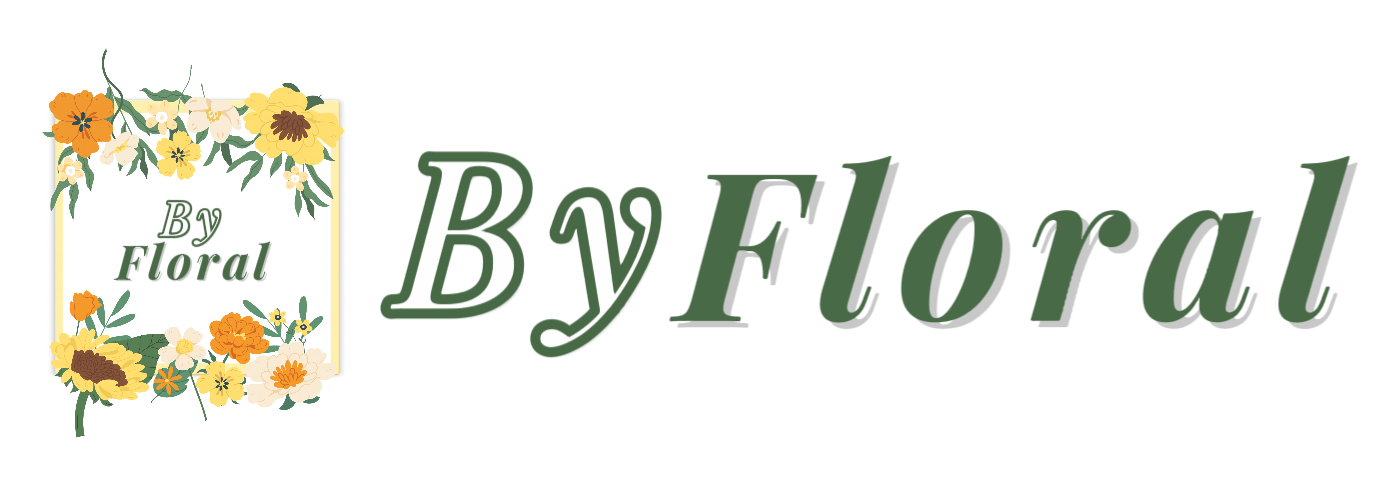Uncategorized
8 Preferred bouquet wrapping paper-Must-Read for Beginners
Table of contents
People rely on their appearance, and flowers are no exception. The beauty of a bouquet requires wrapping paper; otherwise, it can appear abrupt.
Different materials of wrapping paper should be matched with bouquets of various colors, transforming the entire bouquet into a stunning work of art and significantly enhancing its value.
With so many options for bouquet wrapping paper, how much do you really know?Today, I will introduce you to nine types of bouquet wrapping paper.
1.Cellophane
Features
Cellophane is transparent, colorless, smooth, and bright, with a suitable thickness for both inner and outer wrapping. It is commonly used with other packaging materials, combining beauty and practicality. This smooth and shiny paper is soft yet strong, serving both aesthetic and functional purposes.
Common colors
Transparent or printed transparent cellophane.
Purpose
All bouquets benefit from cellophane. Its primary function is to act as a waterproof layer (water storage layer) for the bouquet. By wrapping the bottom of the bouquet with cellophane, you can add a small amount of water to keep it fresh.
Additionally, there’s a thicker variant called OPP that can be transparent or patterned, suitable for outer wrapping.

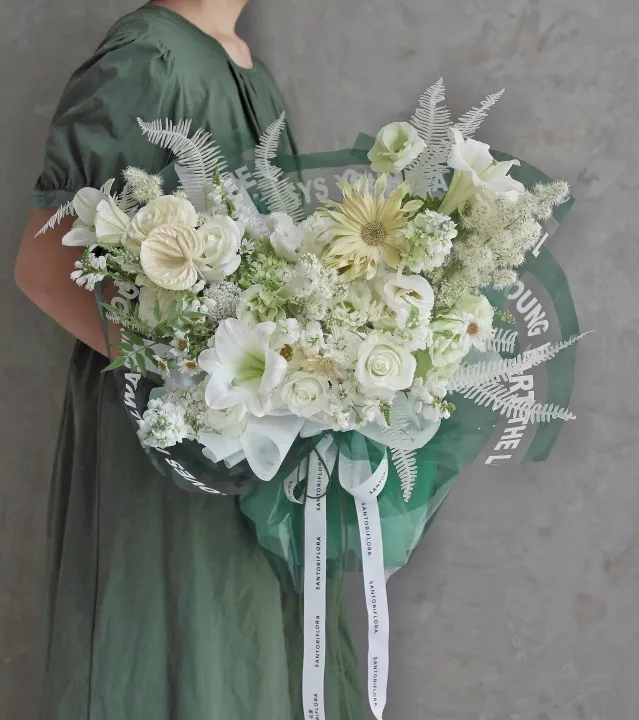
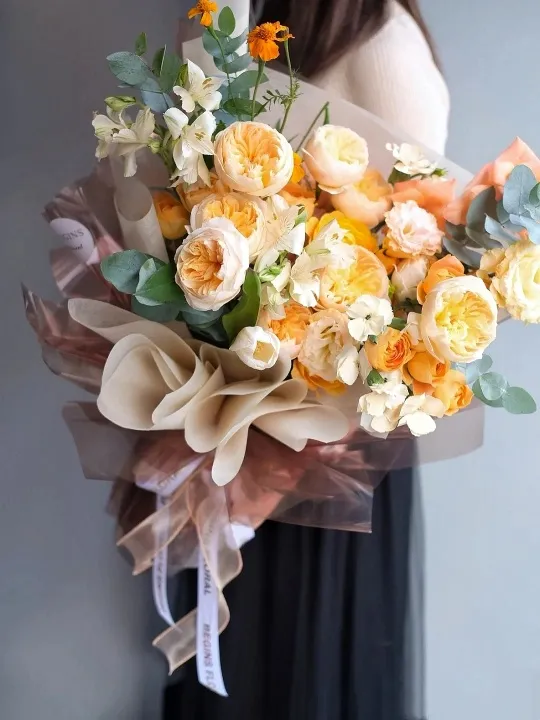
REC
50M CLEAR CELLOPHANE WRAP ROLL FOR BOUQUETS
40 Sheets Colored Cellophane Wrapping Paper for Flowers
Bow Printed Cellophane Wrap Paper Pack 20 (57x57cm)
Creative Bubble Textured Florist Cellophane Paper Pack 10
Colored Cellophane Paper with Golden Border Pack 20
20pcs English Letters Flower Bouquet Packaging Cellophane Paper
2.Sydney paper
Features
Sydney paper is thin, lightweight, flexible, and easy to shape. It has loose, brittle, and semi-transparent characteristics. One side is smooth and delicate; most varieties lack waterproof functionality (though some waterproof options are available). Kneading the paper creates a naturally fluffy texture that adds softness and layers to the bouquet.
Common colors
White, khaki, black, gray, pink, champagne, etc.
Purpose
Typically used as the “lining” for bouquets, it pairs well with other colored wrapping papers. This lining adds an element of nobility and purity to the bouquet’s presentation.
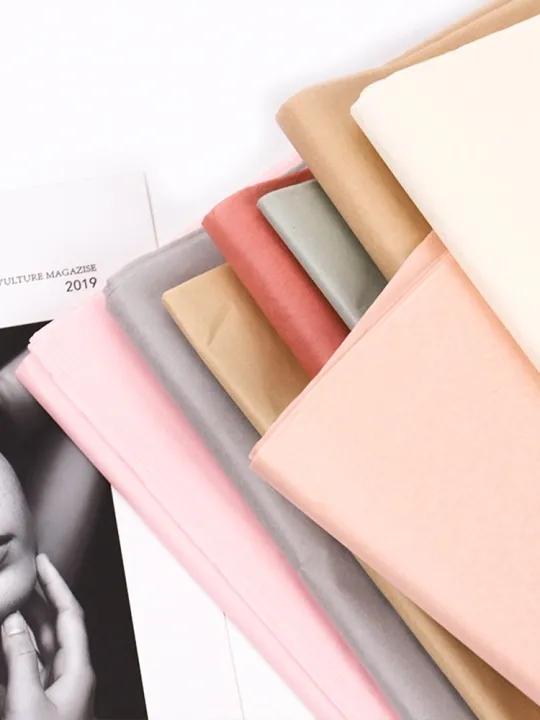
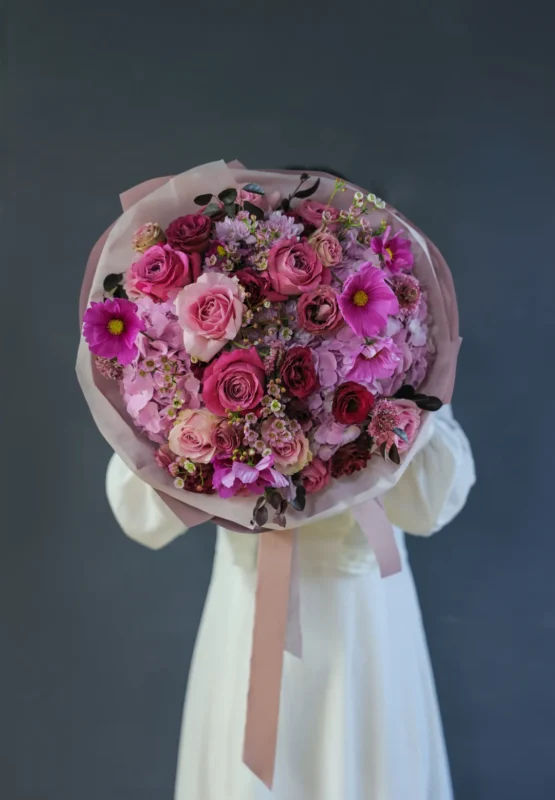
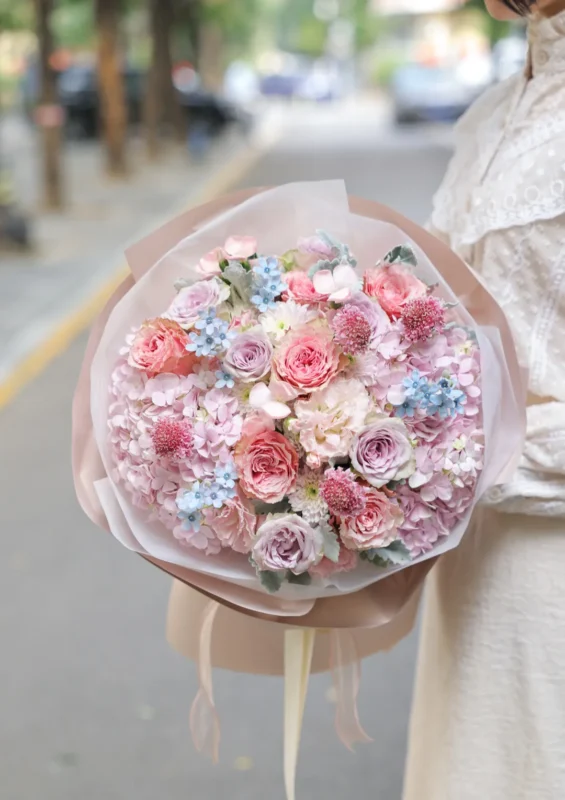
3.Milk cotton
Features
Milk cotton is made from soft plant fibers with a clear and gentle texture. Its simple colors are not flashy but provide a delicate touch; it is tough and wear-resistant.
Common colors
Sugar frosting white, white chocolate, cheese yellow, matcha green, clove purple, carbon element, honeydew powder, etc.
Purpose
This material is commonly used as a base and outer wrapping for bouquets and is particularly favored in Korean-style floral arrangements.
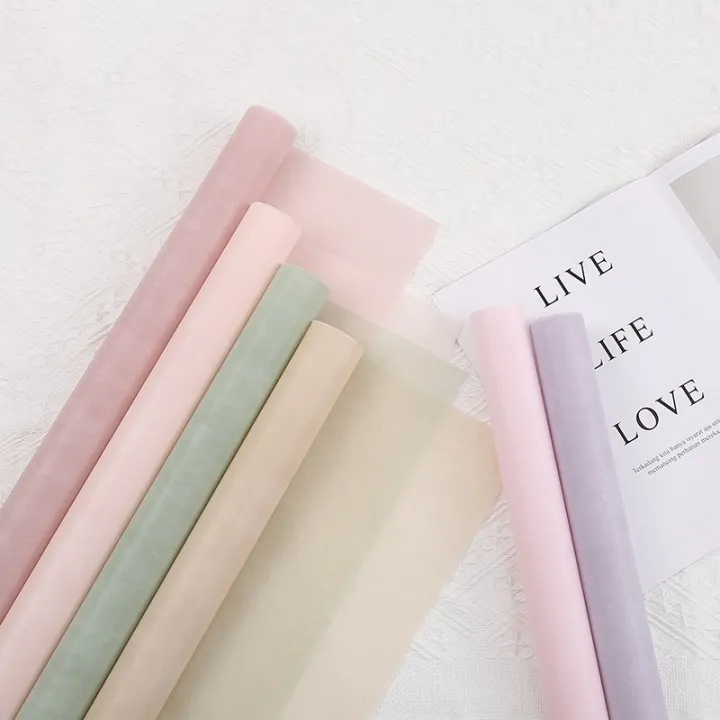
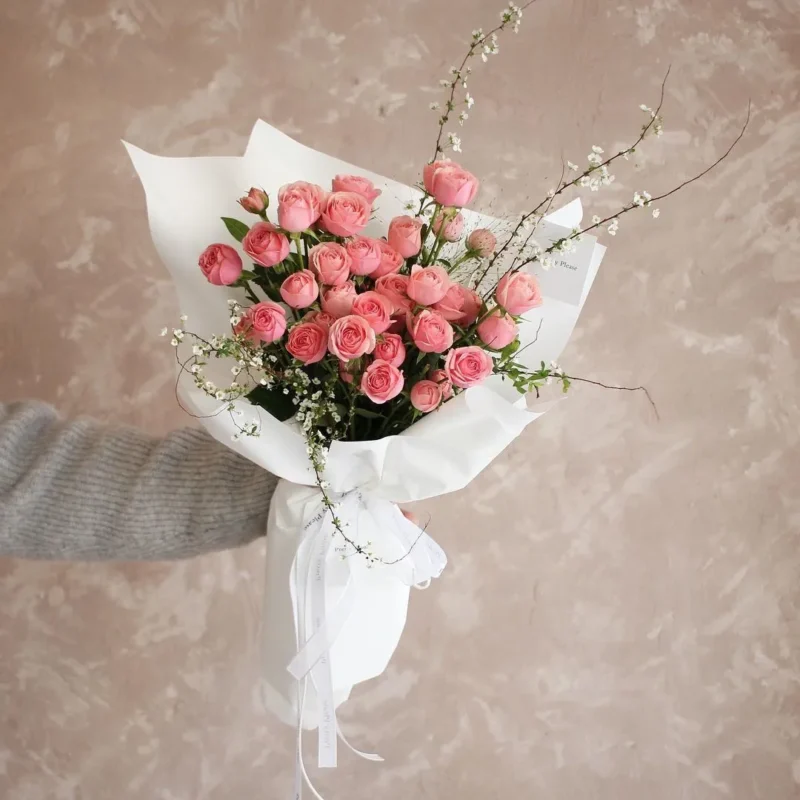
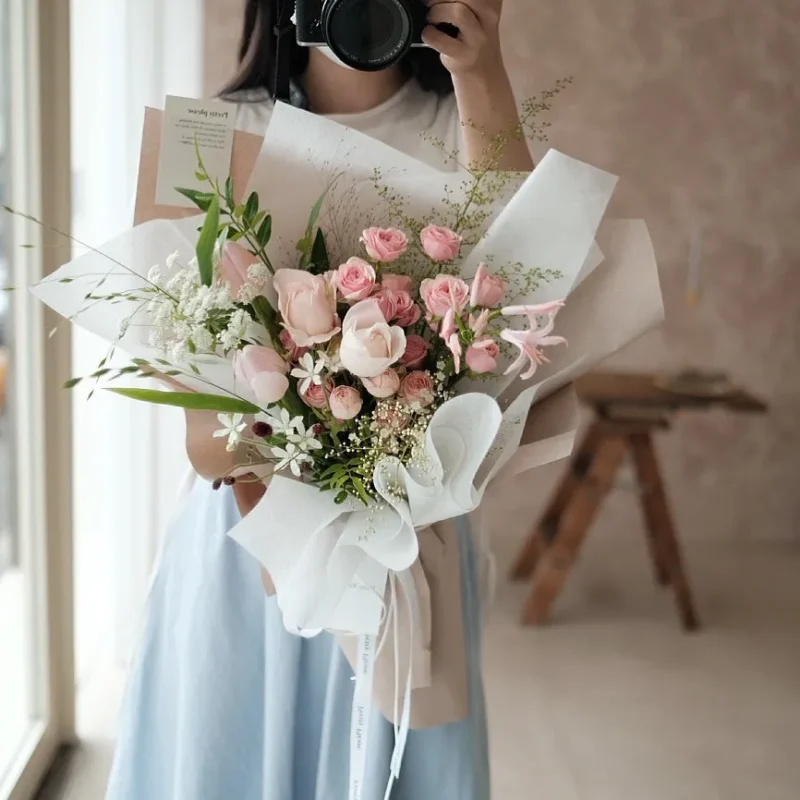
4.Matte paper
Features
Matte paper shares waterproof qualities with cellophane but has a semi-transparent frosted texture. It is mostly made from matte film material that is soft to the touch.
Common colors
Beibai, light pink, light blue, black, burgundy, etc.
Purpose
Often used for outer wrapping of bouquets; this type of paper is popular in Japanese and Korean styles due to its ability to create simple yet elegant designs.
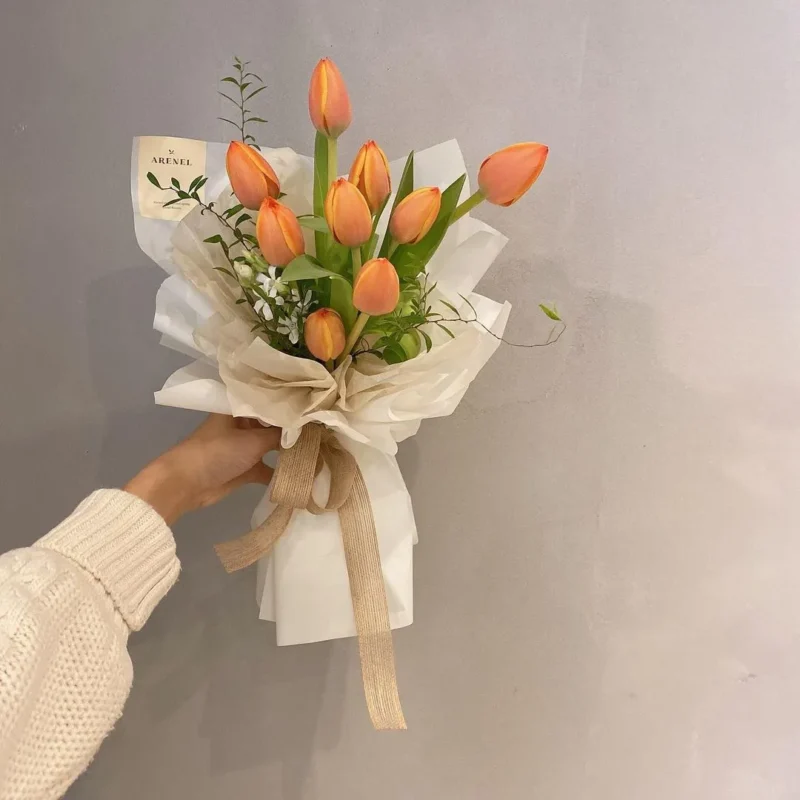
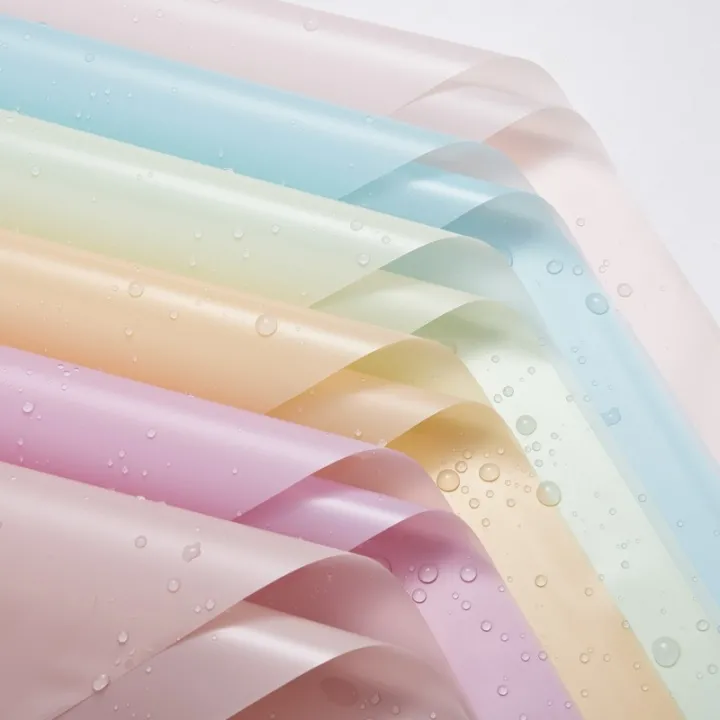

REC
40 Pcs Translucent Matte Plastic Wrapping Paper for Bouquets
15 Yards Frosted Waterproof Korean Flower Wrapping Paper Roll
11 Yards Waterproof Solid-colored Matte Florist Paper Roll
Frosted Silver-edge Cellophane Wrap Paper Pack 20
Frosted Botanical Cellophane Wrap Paper Pack 20
Translucent Frosted Waterproof Florist Paper Pack 20 (58x58cm)
5.Hansel paper
Features
Hansel paper has lower transparency than matte paper; both sides are smooth and easy to shape. It comes in various colors and is waterproof. Simple colors enhance the bouquet’s character while patterned options offer a more delicate touch—making it a preferred choice for Korean-style bouquets.
Common colors
Meat powder, elegant white, ice blue, bright red, black, khaki, water powder, etc.
Purpose
Primarily used for external bouquet packaging in Korean or fresh styles.
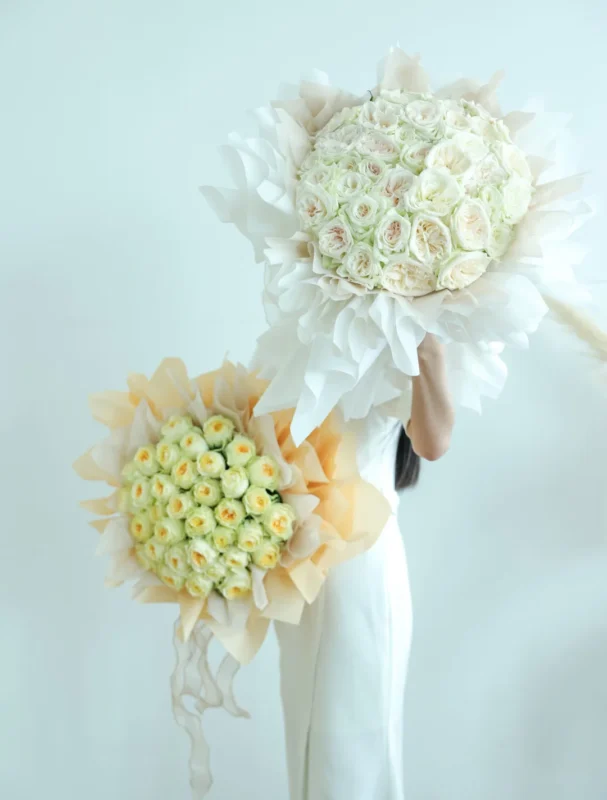
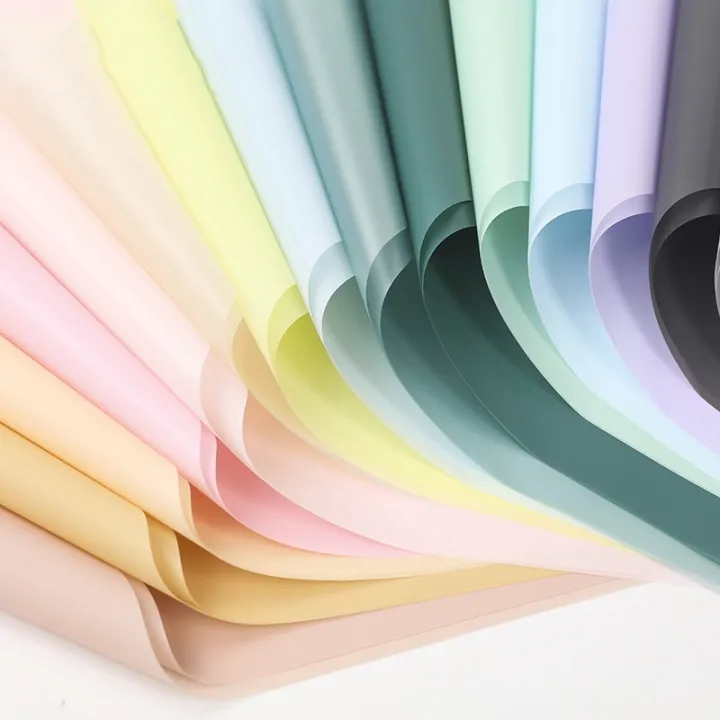
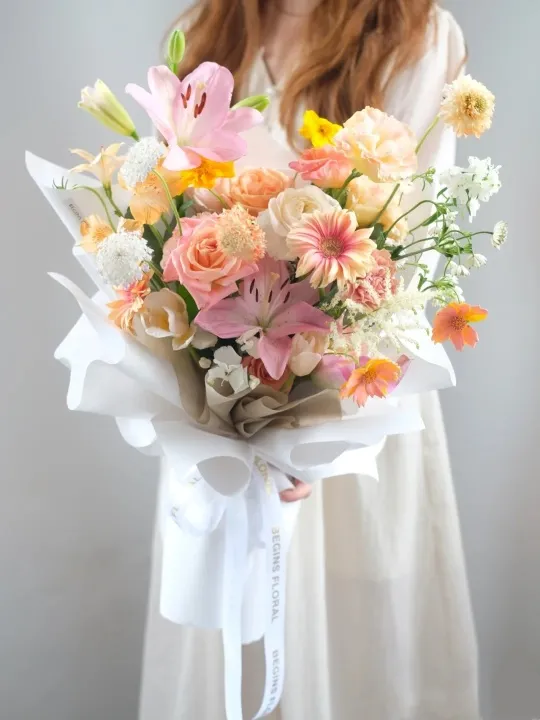
REC
40 Pcs Translucent Matte Plastic Wrapping Paper for Bouquets
Translucent Frosted Waterproof Florist Paper Pack 20 (58x58cm)
Translucent Frosted Floral Wrap Paper Pack 20 (57x57cm)
Lace Translucent Cellophane Paper Pack 20
Butterfly Translucent Frosted Cellophane Paper Pack 20 (57x57cm)
Translucent Gradient Cellophane Wrap Paper Pack 20 (58x58cm)
6.Kraft paper
Features
Kraft paper has a tough texture that resists deformation; it is relatively thick with a woody yellow-brown color being common.
Common colors
Leather, light gray, light pink, light purple, black, etc.
Purpose
Kraft paper packaging pairs beautifully with pastoral or artistic bouquets to create an elegant retro feel.
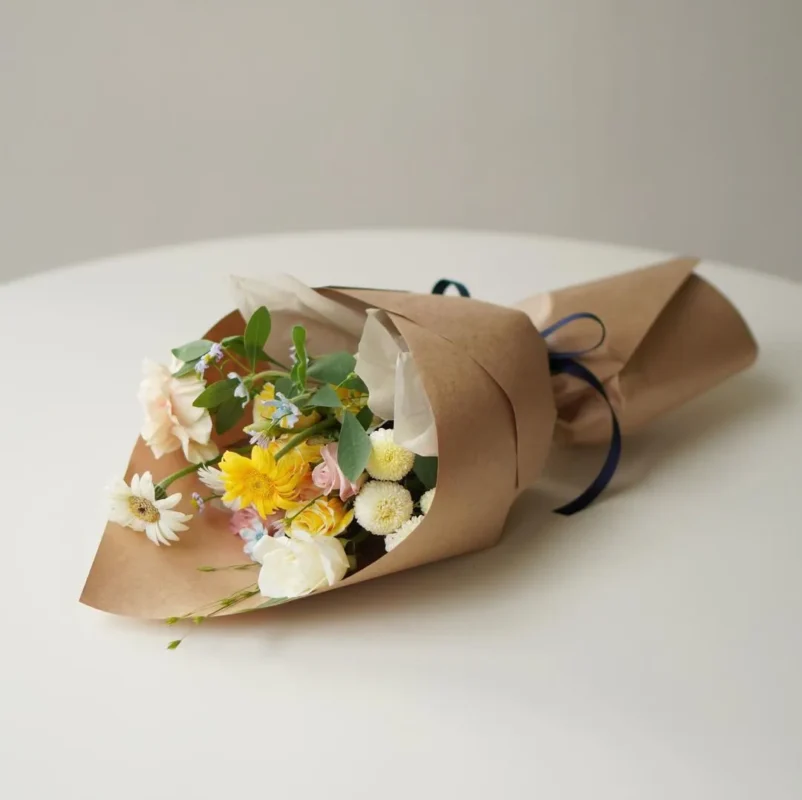
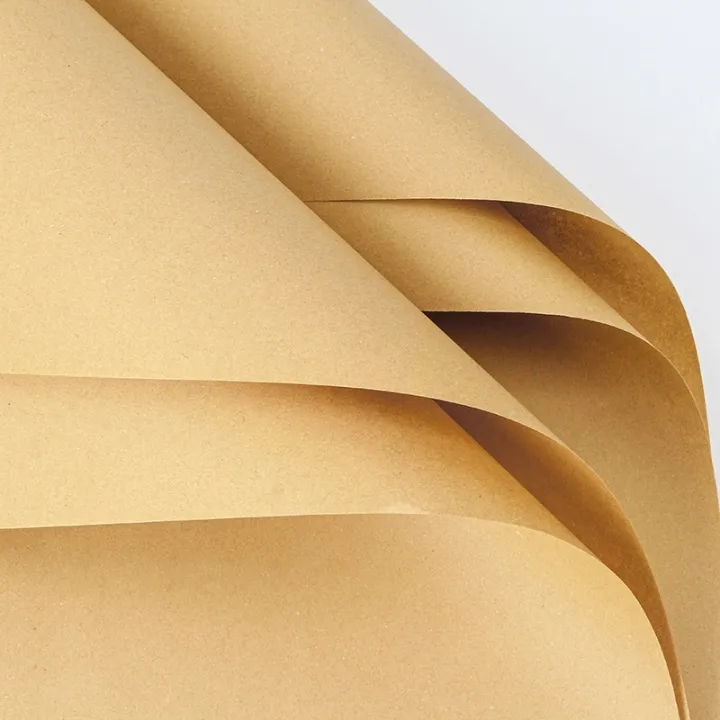
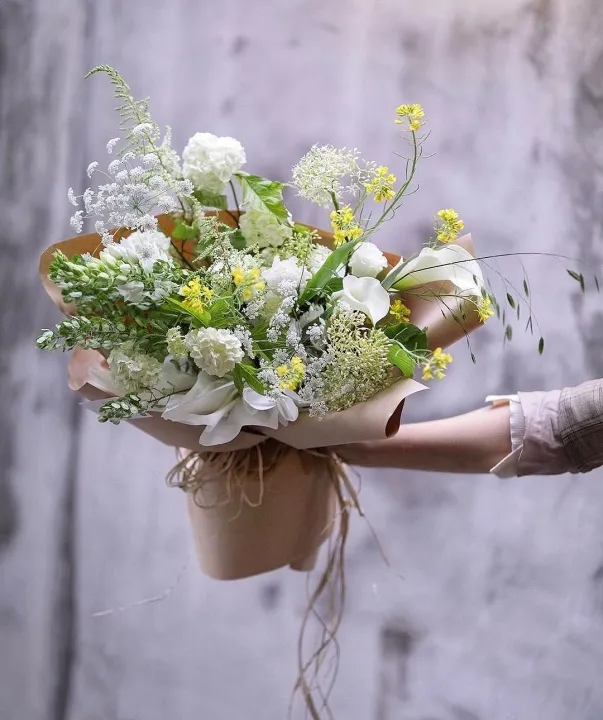
REC
20 Sheets Double Sided Kraft Flower Wrapping Paper
20 Pcs Bicolor Thick Kraft Wrapping Paper for Flowers
8 Yards Waterproof Colored Kraft Flower Wrapping Paper Roll
Set of 30 Waterproof Kraft Paper Bouquet Wrapping Paper
7.English paper
Features
This category includes white cowhide, primary color cowhide, bear cowhide, Korean newspaper varieties—all offering a retro coffee color that pairs well with yellow sunflowers to evoke positivity.
Common colors
Beibai, light pink, light blue, black, burgundy, etc.
Purpose
English newspapers are ideal for single-sided or round bouquets; this practical kraft paper remains a favorite among florists.
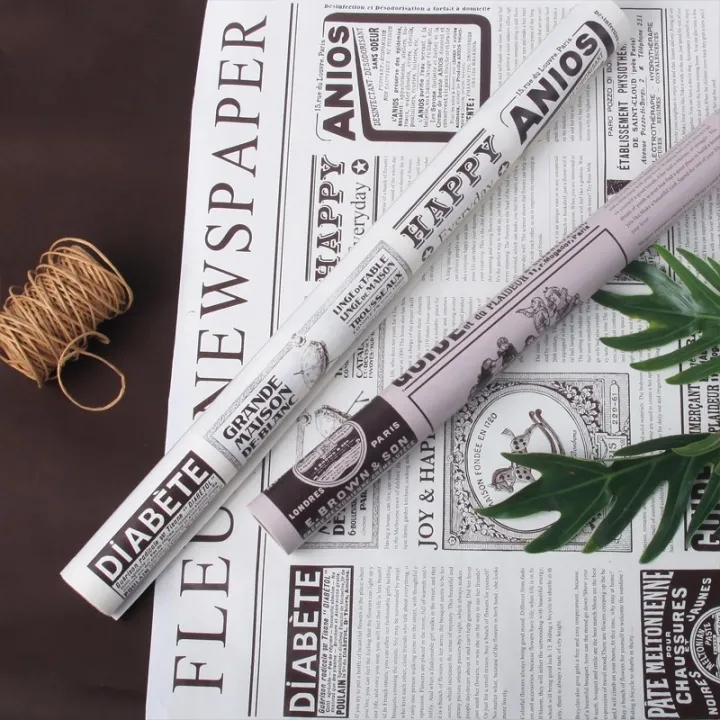
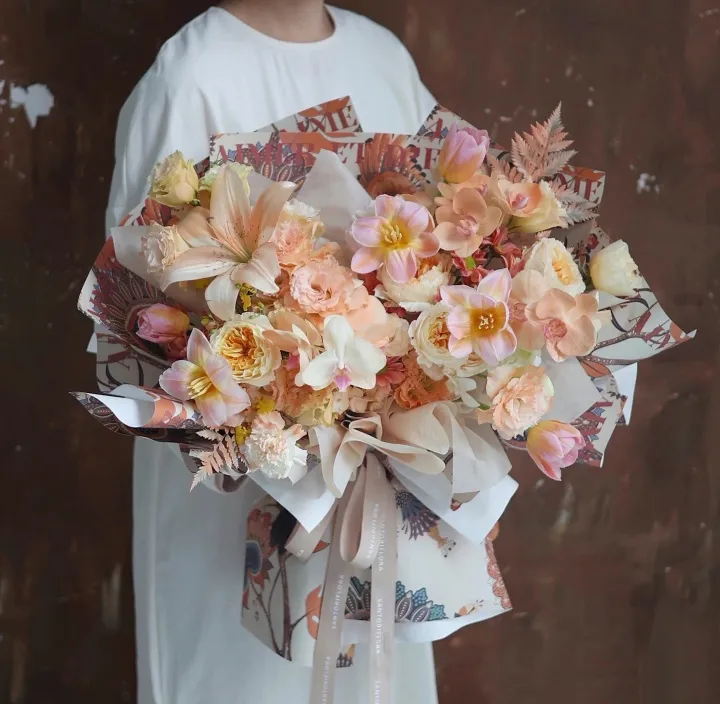
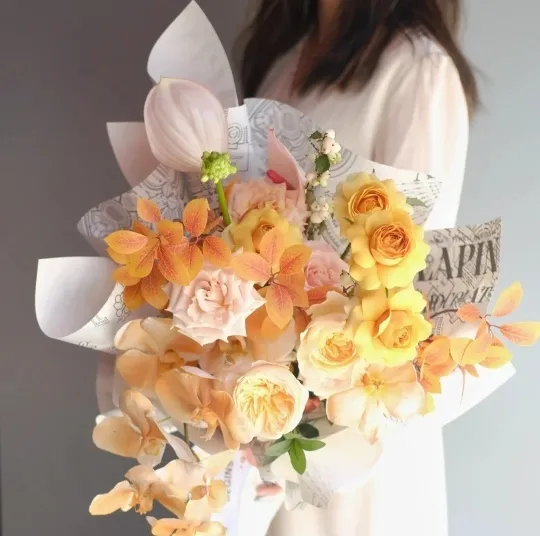
REC
20pcs English Letters Flower Bouquet Packaging Cellophane Paper
Retro English Newspaper Flower Wrapping Paper Pack 10 (38x53cm)
8.Mesh yarn
Features
Made from synthetic fibers with elasticity and transparent plaid patterns; available in various types including circular mesh and polka dot yarns.
Common colors
Gray, white, black, cherry blossom pink, soot blue, turquoise green, etc.
Purpose
Used as the outermost decoration or lining for bouquets to add depth and softness.
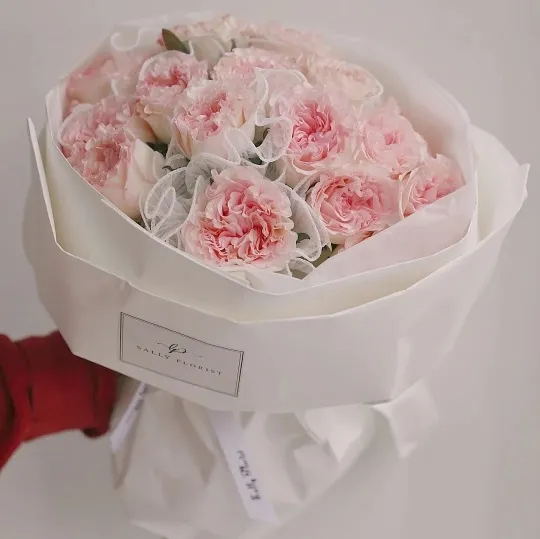
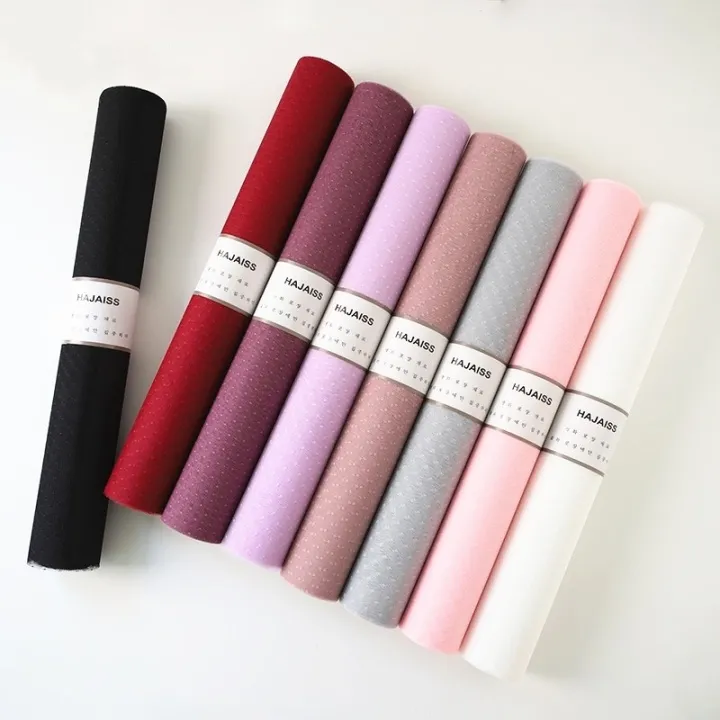

REC
Florist Aesthetic Photography Props Background Cloth (1.2mx3m)
Bouquet Flower Wrapping Tulle Fabric Roll (1.6mx50Yd)
Lace Wrapping Korean Style Flower Packaging Tulle Roll (50cmx5Yd)
Of course, in addition to the packaging paper mentioned by the editor above, there are many other varieties.
Packaging materials are constantly updated with the market, and we also need to keep an eye on popular trends, keep up with the market, and switch our floral works and styles~
Floral packaging, don’t imagine it to be so complicated, as long as you master the types and material characteristics of the packaging paper, the matching will also be handy~

